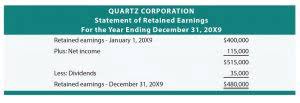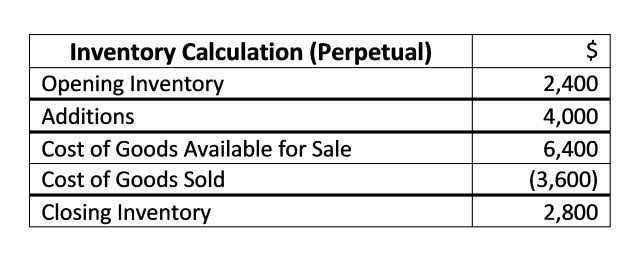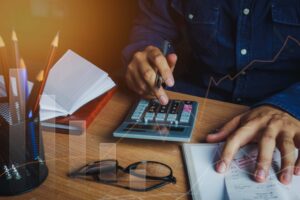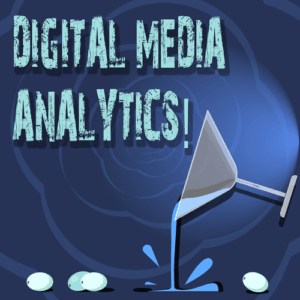Balance Sheet: Explanation, Components, and Examples

I have 8+ years of writing experience in the different template fields and working with ExcelTMP.com for 7 years. I work with a team of writers and business and legal professionals to provide you with the best templates. In short Balance sheet template is very helpful for every business to record its financial record. Shareholders’ equity/ owner equity.Total Assets.Total liability. The digitally financial templates are varying from form to firm many firms use the American template and many use the British template.

Accumulated other comprehensive income
Ultimately, what a balance sheet is matters less than what it can do. By weighing assets against liabilities, reading balance sheets paints a picture of business performance. When you combine these two amounts, the total should match your assets. This balance shows that your financial records are accurate and everything is accounted for. If the totals what is a balance sheet example don’t match, double-check your figures to ensure nothing was left out or miscalculated. Earnings, or the amount of money a business generates on its own, contribute to shareholder equity.
How is the Balance Sheet used in Financial Modeling?
For example, imagine a company reports $1,000,000 of cash on hand at the end of the month. The balance sheet is a financial report detailing a company’s assets, liabilities, and reports in a specific period. Depending on the specific accounting period, a balance sheet can be prepared monthly, quarterly, and annually. The notes contain information that is critical to properly understanding and analyzing a company’s financial statements. Owner’s equity is equal to total assets minus total liabilities. In other words, it is the amount that can be handed over to shareholders after the debts have been paid and fixed assets the assets have been liquidated.

Free Course: Understanding Financial Statements

When a company makes a profit, the amount of profit is added to shareholders’ equity. When a company loses money, the loss is subtracted from shareholders’ equity. Inventory stock includes all items a business possesses and intends to sell, including products currently in stock. Various techniques, such as the first in, first out (FIFO) and last in, first out (LIFO) methods, are used for calculating stock levels.

When a specific account is identified as uncollectible, the Allowance for Doubtful Accounts should be debited and Accounts Receivable should be credited. A balance sheet line that includes cash, checking accounts, and certain marketable securities that are very close to their maturity dates. Liabilities also include amounts received in advance for a future sale or for a future service to be performed. The account Retained Earnings provides the connection between the balance sheet and the income statement.
- This is not to be confused with the par value or market value of stocks.
- We’ll cover how to prepare a balance sheet and how it can help you understand your business’s financial situation.
- In order to issue a company’s financial statements on a timely basis, it may require using an estimated amount for the accrued expenses.
- At that point, the depreciation of the constructed asset will begin.
- A balance sheet serves as reference documents for investors and other stakeholders to get an idea of the financial health of an organization.
- Cash and other resources that are expected to turn to cash or to be used up within one year of the balance sheet date.
By comparing your business’s current assets to its current liabilities, you’ll get a clearer picture of the liquidity of your company. In other words, it shows you how much cash you have readily available. It’s wise to have a buffer between your current assets and liabilities to at least cover your short-term financial obligations. The data from financial statements such as a balance sheet is essential for calculating your business’ liquidities. While income statements and cash flow statements show your business’s activity over a period of time, a balance sheet gives a snapshot of your financials at a particular moment.
- You can save your business by solving those red flags on a balance sheet.
- Balance sheets measure profitability and keep your finger on the pulse of a firm’s financial health.
- Based on the purpose and reporting needs, the balance sheets can be categorized into various types.
- A higher debt-to-equity ratio means the company relies more on debt to finance its operations.
- Some liabilities are considered off the balance sheet, meaning they do not appear on the balance sheet.
- A balance sheet depicts many accounts, categorized under assets and liabilities.
- The assets should always equal the liabilities and shareholder equity.
The purpose is to allocate the cost to expense in order to comply with the matching principle. In other words, the amount allocated to expense is not indicative of the economic value being consumed. Similarly, the amount not yet allocated is not an indication of its current market value. The amount results from the timing of when the depreciation expense is reported. The cost of a company’s production assets is reported on the balance sheet as equipment or as machinery Grocery Store Accounting and equipment.
- The balance sheet is organised into distinct sections, each displaying the total of corresponding accounts along with their respective sub-accounts and balances.
- Or you might compare current assets to current liabilities to make sure you’re able to meet upcoming payments.
- Either you take a loan or buy a property – there’s always an impact.
- They are often valued by the cash flows of assets and non-assets.
- While current assets can be converted into cash within a year, liquidating non-current assets, such as fixed assets (PP&E), can be a time-consuming process.
The Directors Loan Account (DLA) tracks all financial transactions between a director and the company. It records any money borrowed or loaned by the director to the business and any personal expenses paid for by the company on behalf of the director. It can be an asset or a liability, depending on whether the business owes or is owed the money. As a small business, it’s crucial to maintain a fixed asset register.